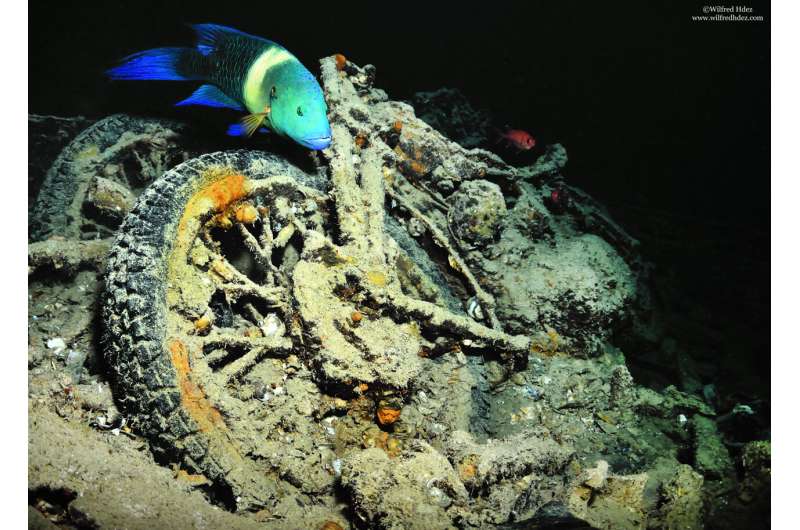March 16, 2023 report
This article has been reviewed according to Science X's editorial process and policies. Editors have highlighted the following attributes while ensuring the content's credibility:
fact-checked
peer-reviewed publication
trusted source
proofread
Long-term study of SS Thistlegorm wreck suggests artificial reefs are as full of life as natural reefs

A team of oceanographers at the University of Bologna and The Inter-Institute Center for Research on Marine Biodiversity has found, via a seven-year study, that artificial reefs may provide a unique opportunity to study new ways to protect natural coral reefs. Their paper is available in the open-access journal PLoS ONE.
The British steamship SS Thistlegorm was a vessel for hauling military equipment at the start of WWII. During one mission, it was carrying motorcycles and munitions across the Red Sea as part of the war effort in the Middle East. It was bombed and sunk off the coast of Egypt, landing on the bottom of the sea 32 meters below the surface.
Famed explorer Jacques Cousteau discovered the wreck back in 1955 and since that time, it has become a popular dive site for tourists. Over the past 70-plus years, the wreck has become a natural reef. In this new effort, the researchers recruited volunteer scientists to help them learn more about the artificial reef and how it and others like it might be used as tools to learn more about reef preservation in light of climate change.
The 128-meter ship came to rest near Ras Muhammad in a fortuitous position—not only does it lean upward, leaving some parts of the wreck just 16 meters below the surface, but it is far enough from the shore that it lies in colder water than most other reefs in the Red Sea. This temperature difference, the research team notes, could help protect the creatures that have made it their home as the ocean warms.
The team made periodic dives to the wreck over the years 2007 to 2014. Over the course of the study, citizen scientist divers also assisted with the project by helping to catalog species of marine life that now use it as their habitat.
One of the goals of the project was to find out if an artificial reef, such as a sunken ship, could support as much diversity as a natural reef. To find out, the research team made up a list of 72 creatures that have been identified living on natural coral reefs in the general vicinity. Over the course of the study, the group was able to verify that 71 of the creatures on the list were indeed living on the wreck. The team also found that the numbers of each species tended to remain stable over the study period.
The team says their findings indicate that artificial structures such as ship wrecks are capable of sustaining well-established communities of plant and animal life, similar to natural reefs.
More information: Chloe Lee et al, Eight years of community structure monitoring through recreational citizen science at the "SS Thistlegorm" wreck (Red Sea), PLOS ONE (2023). DOI: 10.1371/journal.pone.0282239
Journal information: PLoS ONE
© 2023 Science X Network




















